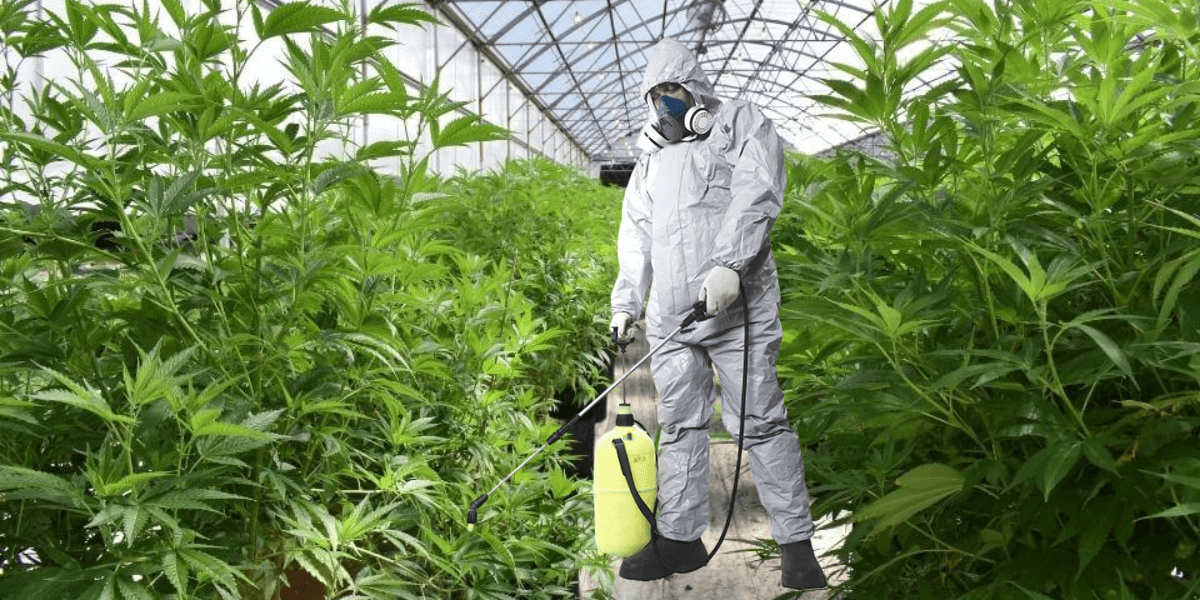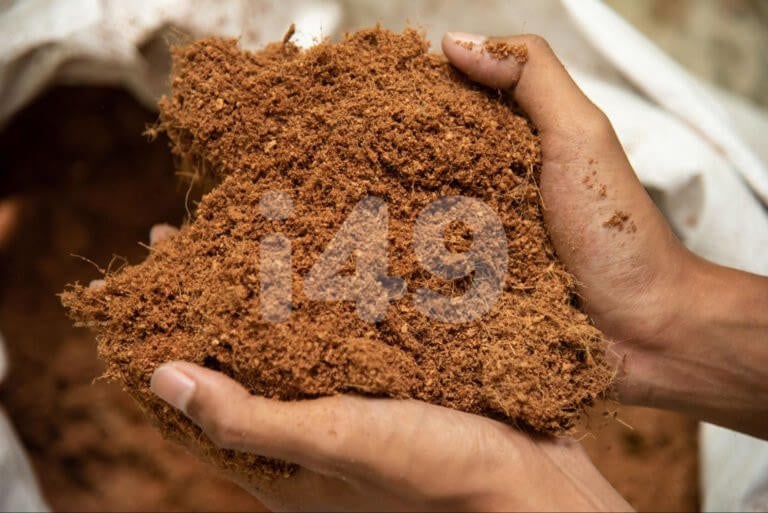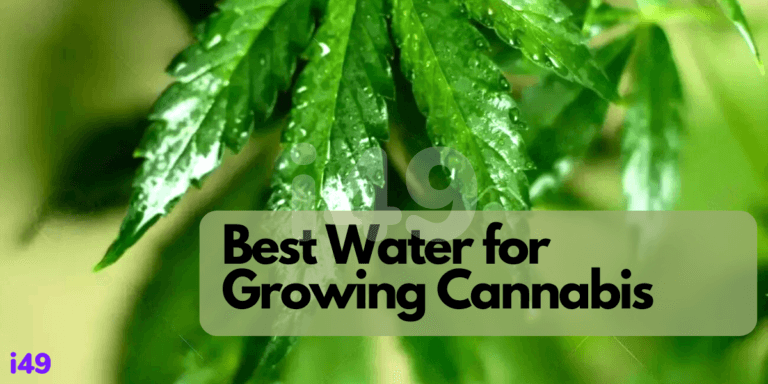Want a quicker way to treat common problems like nutrient deficiency, limited absorption, pests and diseases? Consider foliar spraying cannabis plants, whether you’re growing outdoors or indoors.
If it’s new to you, we’ll show you the ropes. Find out the technique, the issues it solves, and how to apply it step by step. Learn the dos and don’ts, the best products to use, and simple recipes you can make at home.
What is foliar feeding, and why do you need it?
Foliar feeding refers to providing your crops with the necessary weed nutrients by spraying the leaves instead of watering the roots.
The stomata, which are pores on the epidermis of the foliage, absorb nourishment faster than the root zone. The former’s efficiency is as high as 95%, which is 8-9 times higher than the latter.

Besides rapid absorption and optimizing nutrients, foliar feeding weed reduces waste compared to watering. You also reduce runoff, saving money and the environment. In addition, the method also benefits your plants as they use less energy to access the food they need.
Although spraying is an excellent way of getting a concentration of nutrients faster to your crops, use it to supplement, not replace, root feeding. While foliar absorption efficiency is higher, the smaller size of the stomata means that it takes in a lower amount than the root system.
The advantages of this method make it perfect to:
- Solve some problems for your plants: The inability to absorb food from the soil due to pH and moisture imbalance, heat stress, pest infestation, or root diseases. Fertilizers for this purpose are generally more effective than those for the roots.
- Overcome nutrient deficiency in cannabis plants: The supplements also help improve iron absorption, lacking in water, soil, or hydroponic solutions.
Supplemental foliar feeding is an excellent way to support mineral accumulation and give your crops additional vitamins and growth stimulants they need. As a result, it helps boost your plants to produce bigger yields and higher-quality buds.
How to foliar feed cannabis step by step
Before we show you how to foliar feed, prepare these items:
- Spray bottle, preferably glass
- pH neutral water
- pH meter
- Container
- Nutrients

Depending on your need, there are two sprayer types to consider:
- Hand sprayers: these are small, making them suitable for use on a couple of marijuana plants. They allow you to be more precise and avoid getting the solution on your buds.
- Pump sprayers: they come with wands, allowing you to cover a more extensive area and more crops.

Next, follow the steps:
Step 1: Prepare your spray
Make the solution to foliar feed marijuana crops by mixing 5ml of the required nutrients with every liter of water in the container. Ensure you follow the recommended dosages.
Although you may use the nutrients for big buds, some manufacturers don’t provide dilution instructions, so start low and increase as you progress.
We suggest using 20% of the recommended dosage per gallon for young plants. Up the percentage as they develop while observing their response.
Step 2: Check your spray pH and nutrients proportions
Check pH values and nutrient measurement (PPM/EC) using the pH/nutrient meter. An ideal reading for a good foliar spray should be a pH of 5.7 and PPM/EC not exceeding 500.
Step 3: Spray your plants
When applying your cannabis foliar feed, set the nozzle to dispense a light mist onto the leaves on both sides. Make sure you don’t soak them. Repeat once a week.
Best foliar feeding for cannabis growing
Although many pesticides are on the market; they contain chemicals that can harm plants and humans. Some may even affect bud flavors.
We recommend using the following natural solutions:
Neem oil
Neem oil keeps pests and bugs like spider mites, aphids, thrips, and whiteflies away from your plants. It also deals with powdery mildew and other diseases.
You only need a small amount of the solution. Read the instructions to ensure you dilute it properly and use the correct quantity.
Potassium soap
Potassium soap is another foliar spray for weed that doesn’t harm your plants as it’s non-toxic. It acts against harmful insects and is excellent for combating cannabis aphids.
Dissolving neem oil in the soap gives you double effectiveness. The latter destroys pests, and the former strengthens your plants’ defenses and helps prevent future infestations.
Fulvic Acid
Fulvic acid usually comes in liquid form and is one of the best ingredients for your foliar feed. Its molecules are biologically active and fast-acting, making it ideal for the purpose.
The solution increases mineral uptake and provides your crops with trace minerals, like iron, copper, zinc, and manganese. It also boosts your plant’s natural resistance to environmental stress.
Humic Acid
Another foliar spray for cannabis plants is humic acid, which is available in liquid and dry forms. It’s a chelator, which helps combine minerals into organic compounds that plants can easily absorb. It also makes nutrients more soluble for uptake.
Organic ingredients
Aloe vera juice is an excellent option if you prefer organic ingredients for your spray. It’s rich in amino acids and enzymes, providing your crops with micronutrients like calcium, zinc, manganese, and magnesium.
Foliar feed with molasses helps as it contains beneficial nutrients that feed plants and soil microbes, including carbohydrates, iron, calcium, magnesium, copper, and selenium.
Other options include cayenne pepper, cinnamon oil, and plain milk. These natural ingredients help fight powdery mildew, fungus, and pests.
Dos and don’ts of foliar feeding
Although foliar feeding marijuana is simple to implement, there are practices to avoid. Follow the dos and don’ts in this table to ensure you get the most benefit from the process.
| Dos | Don’ts |
| Choose products that are safe for your plants. Avoid those containing chemicals that may be toxic to your crops. | Don’t spray when the light is on if you grow indoors, as your plant can’t absorb the solution quickly enough. The leaves might burn as the liquid acts as a lens, magnifying the lamp’s heat. |
| Use a type of sprayer that allows you to adjust the nozzle and droplet size. To boost efficiency, it should be within 100 and 175 microns. | Don’t foliar spray weed when the weather is too cold or too hot. Avoid spraying when growing cannabis outdoors as your crops get direct sunlight, and don’t do it when it’s hotter than 79°F. |
| Apply the proper spray volume. Cover the whole canopy with a light mist for greater absorption efficiency, treating both sides of the leaves. | Don’t drench the foliage, as your plant may not have time to absorb the solution before the light comes back. |
| Adjust the pH of the fertilizer to improve nutrient solubility for optimal absorption. | Don’t foliar spray during flowering as it can affect bud flavor. If you need to treat your plants, do it before the last three weeks and avoid the colas. |
| Over-dilute the recommended solution to ensure it’s not too strong for your plants. Then, gradually increase the dose as your crops adapt. | |
| Monitor the humidity for growing weed as foliar feeding can raise the level, causing problems to your crops. Move the plants that require treatment away from the others to avoid creating a humid environment. |
Foliar spray recipes
If you prefer not to buy commercial products, try these recipes for homemade sprays for foliar feeding cannabis plants.
Natural growth stimulant
For this recipe, you’ll need:
- 0.35 oz. of kelp meal
- 0.18 oz. of aloe vera juice
- 0.18 oz. of liquid silica (optional)
- 0.18 – 0.35 oz. of alfalfa meal (optional)
Soak the kelp meal in one liter of water for about 3–5 days. Then add the aloe vera juice, mix well, and your foliar spray is ready.
You may include liquid silica and alfalfa as they stimulate growth and increase plants’ resistance to pests and diseases.
Natural insecticide
This solution to foliar spray cannabis is excellent for dealing with pests or preventing an infestation. The ingredients include:
- 1 teaspoon 100% natural neem oil
- 0.03 fl oz. Organic insecticidal soap
- 0.2 gallons of warm water.
Mix the soap with the water and add the neem oil. Shake the container to blend the ingredients. Your spray is ready to use.
Use foliar spraying to enhance your yields
Foliar feeding is excellent for treating issues like nutrient deficiencies and providing additional growth stimulants to your weed plants.
To maximize its benefits, ensure that you follow the dos and don’ts and note how often to foliar feed your crops. Remember that the method should complement root feeding and not replace it.
Visit our catalog for more expert growing tips and quality cannabis seeds.












